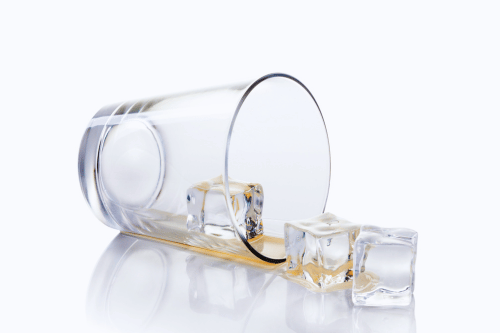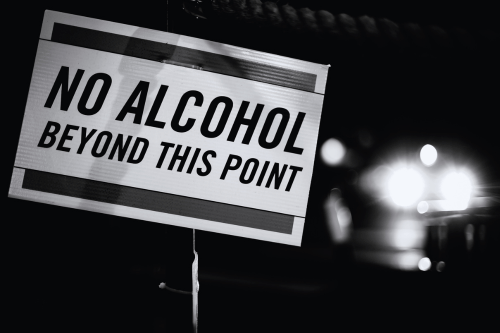

Many people wonder, “Is alcohol a stimulant or a depressant?” The answer lies in how alcohol affects brain activity and bodily functions. While alcohol may cause stimulating effects at first, it is classified as a depressant drug due to its dominant sedative effects on the central nervous system.
After drinking small amounts of alcohol, people often experience a sense of euphoria and increased energy levels. This is due to a spike in dopamine production, which temporarily boosts mood and neural activity. These stimulating effects are misleading because they fade as blood alcohol concentration rises.
This initial high may include talkativeness, risky behavior, and aggressive behavior, especially in social settings. But these effects don’t mean alcohol is a true stimulant. Instead, they reflect the drug’s early impact on brain function before its depressant effects fully take hold.
Once the initial stimulant effects wear off, the true nature of alcohol emerges. Alcohol slows brain activity, reduces reaction times, and impairs motor coordination. These are classic signs of a nervous system depressant.
As a depressant drug, alcohol interferes with bodily functions like heart rate, body temperature, and breathing. This disruption leads to slower reaction times, poor decision-making, and cognitive impairments. These depressant effects increase with higher doses of alcohol.
The effects of alcohol vary depending on the person, but all experience some form of cognitive impairments. Alcohol reduces cognitive function, leading to lack of coordination and impaired coordination. Long-term exposure worsens these symptoms.
Chronic alcohol use disorder often damages memory, focus, and judgment. These negative effects alter brain structure and lead to long-lasting mental health issues. The connection between alcohol and mental health disorder symptoms is well-established.

The release of dopamine explains alcohol’s temporary pleasure. As dopamine levels rise, users feel a short-lived euphoric effect. However, over time, repeated use reduces natural dopamine production, leading to dependency and alcohol addiction.
People with alcohol dependence drink more to recreate that original high. This process increases alcohol tolerance, meaning higher amounts of alcohol are needed to feel the same effects, which raises the risk of alcohol poisoning and alcohol abuse.
Alcohol weakens the human body over time. Excessive drinking raises the risk of heart disease, types of cancer, and even heart attack due to chronic inflammation and oxidative stress. It also slows the heart rate and disrupts body chemistry, putting stress on vital organs.
The toll on physical health is often seen in poor liver function, pancreatitis, and gastrointestinal damage. Long-term alcohol use also affects body temperature regulation, leading to hypothermia in extreme cases, and weakens immune defenses, increasing the risk of infection. These effects are more pronounced with heavy drinking, excessive alcohol consumption, and repeated binge episodes over time.
People often exhibit aggressive behavior or emotional volatility under alcohol’s influence. These shifts stem from reduced brain function, decreased dopamine production, and impaired control over actions. Alcohol may seem like it boosts confidence, but it actually reduces inhibition, leading to unpredictable emotional outbursts.
This contributes to risky behavior, interpersonal conflict, and legal problems, especially in public or social settings. Alcohol’s impact on mental health can also trigger symptoms of depressive disorder, anxiety, and long-term mood instability. Chronic exposure may lead to a co-occurring mental health disorder, complicating recovery efforts.
Drinking large amounts of alcohol in a short period, also known as binge drinking, can cause alcohol poisoning—a severe and potentially fatal condition. This occurs when blood alcohol concentration rises to a level that suppresses basic bodily functions such as breathing and heartbeat.
Symptoms include Loss of consciousness, vomiting, low body temperature, slow heart rate, and seizures. Without quick intervention from healthcare professionals, alcohol poisoning can cause permanent brain damage or death. High alcohol tolerance may mask early warning signs, increasing the danger for habitual drinkers.

One of the most obvious signs of alcohol’s depressant side effects is reduced reaction times and poor decision-making. This makes driving, machinery operation, and even basic tasks like walking hazardous after alcohol consumption.
With continued use, this slow-down becomes more severe, contributing to injuries, falls, and accidents both at home and in public. These negative effects can persist even after the person feels sober, especially in those with elevated alcohol tolerance or history of alcohol abuse. Slowed reaction times also impair one’s ability to respond in emergencies, increasing overall risk.
Over time, repeated alcohol consumption may lead to alcohol use disorder, which includes both alcohol dependence and alcohol addiction. People struggle to stop drinking despite the clear negative effects on their relationships, jobs, and physical health. These patterns are fueled by rising alcohol tolerance, cravings, and withdrawal symptoms.
This cycle of use, withdrawal, and relapse is difficult to break without structured care. At Sullivan Recovery in Mission Viejo, we offer personalized alcohol addiction treatment through outpatient programs that include behavioral therapy, relapse prevention strategies, and medical detox. We help individuals understand the root causes of their alcohol use disorder and build a foundation for long-term recovery.
Some individuals are more vulnerable to alcohol use disorder due to genetic factors, early exposure to alcohol, or co-occurring mental health issues like anxiety or depression. Family history of alcohol addiction increases the risk, especially when combined with traumatic experiences or lack of support.
Others develop addiction through repeated alcohol abuse in social settings, where drinking becomes normalized or encouraged. Increased alcohol tolerance and frequent excessive alcohol consumption make it harder to recognize harmful patterns. Understanding personal risk—whether inherited or environmental—is key to early intervention and prevention.
While the stimulating effects of alcohol might provide a short-term sense of euphoria, it ultimately lowers energy levels and leaves users feeling fatigued, emotionally unstable, and mentally foggy. Alcohol acts as a depressant drug, disrupting sleep cycles and circadian rhythm, which worsens mood swings and contributes to exhaustion.
Even when alcohol increases the release of dopamine, it is followed by a crash that leads to sadness, irritability, and sometimes anxiety. These emotional fluctuations add to symptoms of mental health disorder and lead to cognitive impairments over time, especially with long-term alcohol use.

Many think alcohol is a stimulant because of the initial effects like cheerfulness, talkativeness, or confidence. These are temporary and result from a brief spike in dopamine levels, not true stimulant effects. This misunderstanding contributes to risky decisions and excessive alcohol consumption.
The truth is that alcohol is a common depressant that slows brain activity, impairs bodily functions, and causes depressant side effects like drowsiness and poor coordination. Classifying alcohol as a stimulant misleads people, making them more likely to underestimate its dangers and fall into harmful patterns of use.
Medical professionals and mental health professionals consistently classify alcohol as a depressant drug due to its broad sedating effects on the central nervous system. This classification is based on its ability to slow brain activity, impair motor coordination, and reduce cognitive function. These facts shape how clinicians assess and treat individuals with alcohol use disorder and co-occurring mental health issues.
Understanding the difference between stimulants and depressants empowers individuals to make more informed decisions. Unlike stimulants, alcohol decreases reaction times, dulls senses, and impairs performance. Despite the temporary feelings of euphoria, alcohol doesn’t enhance productivity—it actually disrupts bodily functions and mental clarity, especially at higher doses of alcohol.

At Sullivan Recovery, we understand how difficult alcohol addiction can be, especially when it’s tied to emotional pain, mental health disorder symptoms, or long-term habits. Our outpatient programs in Mission Viejo are designed to meet the needs of those balancing treatment with work, family, and daily life. We target both the physical health challenges and psychological causes behind alcohol use.
We support clients through every stage—from medical detox to structured behavioral therapy and relapse prevention education. Our programs also address the underlying patterns of alcohol abuse, including the effects of alcohol tolerance, dopamine production, and energy level imbalances. Our goal is to guide each individual through a sustainable recovery journey, offering real-world tools to restore health, stability, and confidence.
To summarize, alcohol has both initial stimulant effects and dominant depressant effects. It may raise dopamine levels and cause a sense of euphoria early on, but its lasting impact is to slow neural activity and reduce brain function.
So, is alcohol a stimulant or a depressant? Alcohol is, without question, a depressant drug. It impairs coordination, weakens physical health, and increases the risk of mental health issues. Knowing this can help individuals drink more responsibly or seek treatment options before long-term harm occurs.
1. National Institute on Alcohol Abuse and Alcoholism (NIAAA) – Effects of Alcohol
2. Centers for Disease Control and Prevention (CDC) – Alcohol Use and Your Health
3. Substance Abuse and Mental Health Services Administration (SAMHSA) – Alcohol Use Disorder
4. MedlinePlus (U.S. National Library of Medicine) – Alcoholism and Alcohol Abuse
5. National Institutes of Health (NIH) – Alcohol’s Effects on the Body
At Sullivan Recovery, as an in-network provider we work with most insurance plans, such as:
And More
If you or a loved one are struggling with mental health challenges or substance abuse, reach out to Sullivan Recovery today. Our team of compassionate professionals is here to support your journey towards lasting well-being. Give us a call at 949-836-7180.
Yes, alcohol can affect men and women differently due to variations in body composition, enzyme levels, and metabolism. Women typically have a higher blood alcohol concentration after consuming the same amount as men, which can intensify the depressant effects of alcohol. This means women may experience stronger impairment at lower doses.
The initial effects of alcohol can begin within 10 to 30 minutes after consumption, depending on body chemistry, amounts of alcohol, and whether food is present in the stomach. These effects start with mild stimulation but shift quickly to sedating effects as blood alcohol concentration rises.
Yes, chronic alcohol use can lead to both mental health disorder symptoms and physical dependency. Mentally, individuals may feel they need alcohol to cope with stress or social situations. Physically, the body adapts to regular alcohol consumption, leading to alcohol tolerance, withdrawal symptoms, and alcohol dependence.
Many negative effects of alcohol—such as poor cognitive function, mood swings, and liver damage—can improve with sobriety and professional care. Programs like those at Sullivan Recovery offer alcohol addiction treatment that includes detox, therapy, and health monitoring to support recovery and rebuild both mental and physical health.